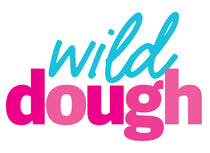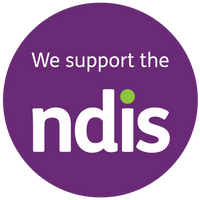When we talk about manipulatives in Play and Early Learning, we are talking about collections of objects, large or small. We are thinking of loose parts, and resources that promote both gross and fine motor skills, and objects that enhance learning opportunities.
In the scope of learning and Play manipulatives help form concrete relationships to concepts; I capitalise Play, because we are talking about the very fundamental work and learning of the child. There is loads of research that suggest children form stronger neural pathways when engaging in hands on learning. In amongst all the seriousness of formal learning, I personally think there’s merit in the use of open-ended manipulatives to encourage lateral thinking and imaginative play, beyond the realms of alphabet letters and MAB blocks (ones, tens and hundreds blocks) in our early years settings, both within and outside the home.
So, what do we use the most in our home? When I first began consciously introducing prepared play into our home, I remember feeling overwhelmed with what we had and didn’t have. Violet was almost three, and Henry only a baby. We were leading up to Christmas—which essentially was a giant dump of plastic toys with no meaning, and no purpose. I started thinking about toys that set out to unintentionally teach skills, which is the essence of a manipulative.
Comparatively, when you talk about a toy marketed to a two-year-old by your leading brands, and an open-ended manipulative, you’re talking about giving your child opportunities to develop their imagination. But, Amy, magnetic tiles and all those little tiny figurines are plastic, why are they okay but the big flash-and-bang Paw Patrol plane isn’t? Let me start by saying: its all balance. Does your kid play with it while you have a hot coffee? Does it bring them joy? Is it high on the scale for developing oral language? Then it is perfectly fine. However, on the flip side, when you pick up the mini figurines and a tub of playdough, what you’re offering your child—beyond the parameters of purpose built play—is the chance for them to engage in critical and abstract thinking. Consider it like this: a tub of yellow and blue playdough, some sea creatures, and a play tray. Henry, aged 2, “buries” the shark in the blue playdough and says “shark is swimming”, while Violet, almost 5, flattens out the yellow, separates the shells and the land animals onto it, and does the same with the blue, while discussing that the large sharks are chasing the smaller fish for food. Fast forward to a day at the aquarium, where both Henry and Violet have been immersed in that learning with the playdough. Those cool little neural pathways that developed with the manipulatives connect both experiences and it’s far more meaningful to the child.
Why is playdough one of the best manipulatives in Early Childhood? I asked Violet’s preschool teachers this question, and they replied with these:
“Playdough is my favourite resource for my classroom. Primarily it benefits very young children for their fine motor skills, muscle strength and independent finger control. It is second to none.”
“Playdough is accessible to all children, making it a truly inclusive tool in which children can work independently but in their own unique ways.”
“Playdough is versatile in its usages, indoor and out.”
“I love how playdough can be tailored to any of the rooms in the centre through scents, tools and props.”
“The only problem with playdough is no matter how much you have, you never have enough to meet the child’s imagination.”
For me, play has to be equal, equitable and accessible to all ages; that’s where playdough ticks all the boxes. The beauty of open-ended manipulatives such as playdough is that they’re only limited to the imagination of the child. The endless opportunities to use knives, scissors, rollers, and stamps to develop those critical fine motor skills are all available when playdough is used. In our house, we offer loose parts and tools, none of which are hard to access in your home. Most recently, I shared an experience on Instagram where Violet spent time understanding her grandmother’s surgery and had the chance to role play as a doctor using a variety of household items like tweezers and children’s sized cutlery. Breaking down the basics of this activity, its easy to see how the manipulatives, like the tweezers (hello future mono-brow), cutlery, and dough, lend themselves to everyday activities that are linked with self-help like dressing, food preparation, and fine motor development.
Just as play is a learning curve for the child, we as adults need to take time to observe the research to understand what play is. Is it messy? Absolutely. Does it always go to plan? Ha. No, and I’ve slowly taught myself to lower my expectations (and, incidentally, lower them again). Take the time to watch your child play—and I mean, watch and engage—get on the floor and pay attention; there are nuances and tiny little developmental milestones that occur regularly when this is happening. I watched Henry add a fifth word into a sentence the other day while stacking blocks. Remember, you don’t need all the things and all the resources to make play happen.
There are plenty of fabulous play accounts on the ‘gram that will show you how DIY play can be accessed by anyone; a manipulative’s use isn’t determined by it’s price tag. One of the most exciting things about Wild Dough is that it ticks that affordability box—not to mention its superb quality that survives the Henrys of the world and their need to mix in like a Cold Rock ice cream bar. Additionally, the Wild Dough community within the grid is full of the most creative play prompts that are there for inspiration. There is beauty in simplicity and simplicity in play; and, if it fails, there’s a coffee and a chance to try again tomorrow!
Leave a comment below and tell us your favourite manipulatives in your home and how they make play fun for you!
About the Author:
I’m Amy, mum to Violet (5 years old) and Henry (2.5 years old). I am a qualified Primary School Teacher (B Teach/B Arts) working in a local primary school with a passion for Early Learning. My instagram @ourpackinpictures is where you’ll find a curation of all the things we love and do. I love a good coffee, play and taking photos—haven’t mastered all three simultaneously, but two out of three will often appear in our grid.

